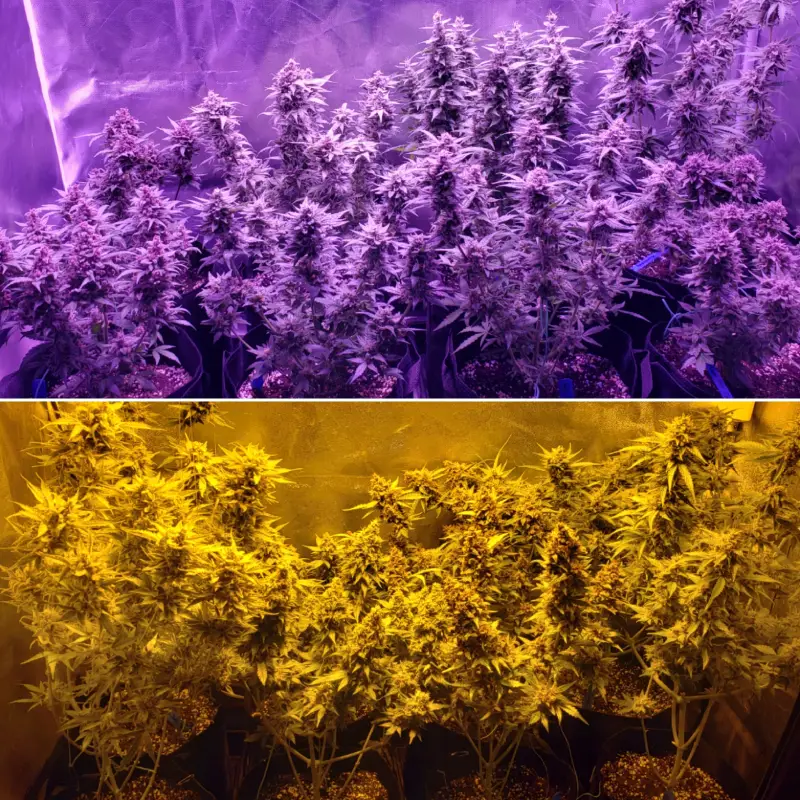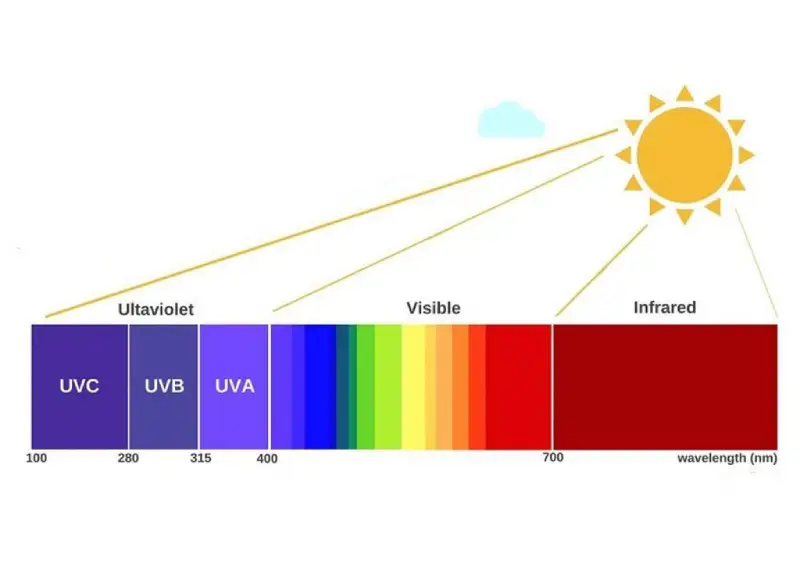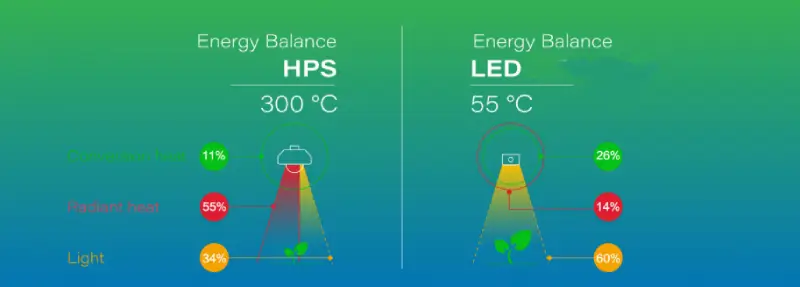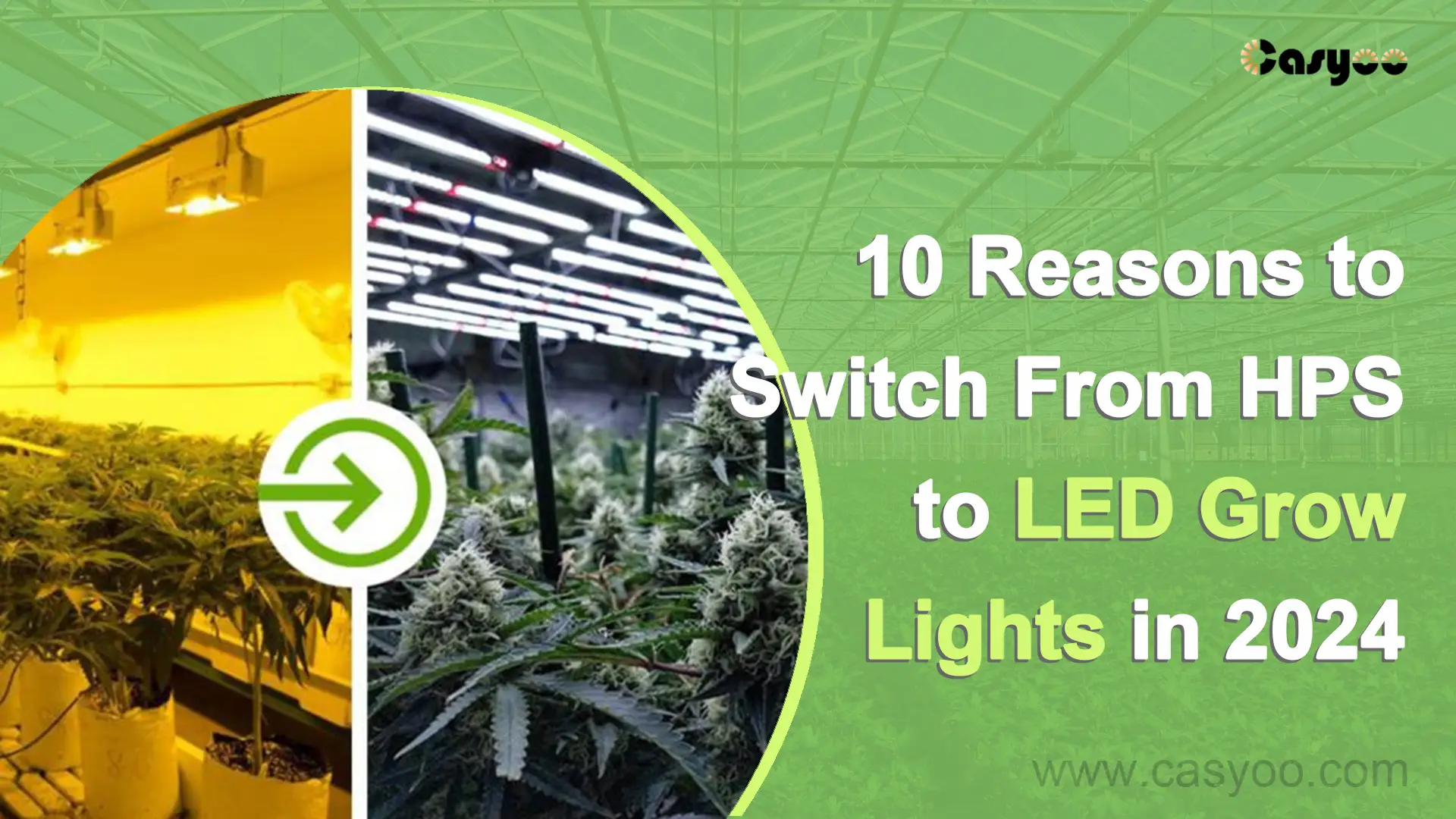Have you considered replacing your HPS lights with LED ones? LED grow lights have numerous benefits and are the way to go when upgrading, even though HPS grow lights look like a more sensible option, especially if you’re just getting started. Today’s gardeners switch from HPS to LED grow lights for a variety of reasons. Let’s explore the main reason!
LED Grow Lights Provide Better Yields and Product Quality

When you switch from HPS to LED, you can expect better yields and quality. One benefit of having a full light spectrum is that it guarantees your plants get the precise amount of light they require at each growth stage. Furthermore, you can influence your crop by changing the light spectrum if you utilize variable spectrum LED grow lights. You may boost potency and enhance flavor by using well-planned light recipes.
LED Grow Lights Use Less Energy
LED grow lights just need a portion of the wattage of HPS lights to get the same results. This implies that switching to LED grow lights will result in greater savings. Grow lights are important for businesses that specialize in plant cultivation. You can lower your overhead expenses and save money for your company by utilizing fewer watts while still getting good outcomes.
Compared to HPS grow lights, LED grow lights can save you up to 50%. That’s a substantial amount that will increase your earnings. Furthermore, passive cooling is a common feature of LED grow lights, meaning that active cooling systems are not necessary.
LEDs Have Better Light Spectrum

The majority of the HPS grow light spectrum is red and green. Green is great at penetrating the canopy, and red is good for blossoming. Even with the “dual spectrum” HPS bulb that was tested, there is, however, it has very little emission of blue wavelengths at 3 to 4%. For this reason, when plants transition to HPS for flowering, they are prone to stretching, therefore farmers use MH bulbs during the veg stage.
However, LED grow lights change this situation. Full-spectrum LEDs rule the LED grow light market, even if certain models are tailored to a specific phase of a plant’s growth cycle. With the advent of LED grow lights, fixtures no longer need to be changed and you only need a grow light. All you have to do is adjust the grow light’s spectrum to suit the growth stage.
LED Grow Lights Emit More Uniform Light
There is no denying that HPS grow lights emit a bright light. However, your plant will have hot spots—areas that receive noticeably more light than others, because of the extreme limitations of HPS technology in terms of light distribution. HPS does not produce highly even light. Conversely, LEDs have an edge in distributing the light more uniformly and deeply within the plant.
According to lighting testing, HPS produces intense light, but it only does it at the exact center of your canopy. Conversely, LEDs evenly distribute PPFD levels throughout the light’s footprint, with little losses as it extends outward.
LED Grow Lights Last Longer
The cost is one of the main reasons growers delay making the switch from HPS to LED grow lights. HPS lights can indeed be attained for less money than high-quality LED lights. However, replacement and operating costs are a different story.
In fact, LED grow lights are more cost-effective over time. An LED grow light’s significantly longer lifespan is one of the main ways to save money. The lifespan of high-end LED grow lights can reach 50,000 hours to 100,000 hours. The lumen depreciation is little.
Usually, HPS bulbs need to be replaced every 5,000 hours to preserve the light output and spectrum.
LED Grow Lights Are Safer
Voltage
The ballast of an HPS bulb is powered by a voltage ranging from 2500 to 4000 V. This is required to spark across the gap and ignite the gas inside the tube. After that, the voltage drops to about 230 V, which is the HPS light’s typical operating voltage.
LED grow lights operate in the grow room at voltages lower than 100V, frequently as low as 24V, as LED technology does not require a startup voltage. A low, secure voltage is suitable for the grow room’s water and plant surroundings.
Water Protection
The HPS bulb screws into an open terminal that cannot be sealed, so it is impossible to insulate it against water splashes. Sealing the HPS fitting against water entry is not possible due to the requirement of air circulating and cooling the bulb.
With an IP certification of 66, high-quality LED grow lights are fully water-sealed, preventing electrical malfunctions even when water is sprayed on them.
LED Grow Lights Produce Less Heat

The fact that LED grow lights produce less heat than HID lights is another benefit. Reduced heat emission creates a more comfortable growing environment, which helps maximize plant growth. Grow tent users who utilize HID lighting typically have trouble with heat and use cooling devices to dissipate the heat.
LED Grow Lights Are Easy to Setup
LED lights usually feature plug-and-play functionality and built-in drivers are common features of LED grow lights. You just need to hang it and plug it in.
Hanging LED grow lights in smaller grow tents won’t be an issue because they produce less heat. Many LEDs can be hung at as low as 12 inches. Additionally, since LEDs last so long, you won’t have to worry about replacements for a while. If replacement is necessary, it’s quick and simple to replace it.
LED Grow Lights Are More Flexible
When it comes to placement and intensity, LED grow lights are more flexible than HPS lights. This enables gardeners to tailor lighting settings to the unique requirements and characteristics of their plants, which can aid maximize plant growth. The user can employ LED fixtures in a variety of configurations by positioning them either vertically or horizontally.
LED Grow Lights Are Better for the Environment

A mercury-containing HPS bulb needs to be disposed of carefully because it is extremely hazardous to the environment. Changing HPS bulbs every few years releases a large amount of harmful waste into the environment. By switching to LED, you may avoid having to dispose of hazardous materials and ensure that your light fixture won’t need to be replaced for at least 50,000 hours.
Final Thoughts
Does it seem like it’s time to switch from HPS to LED grow lights? Casyoo full spectrum LED grow lighting is your best option. In addition, we are available 24/7 to address any questions you might have regarding the switch. Talk to us right now!





